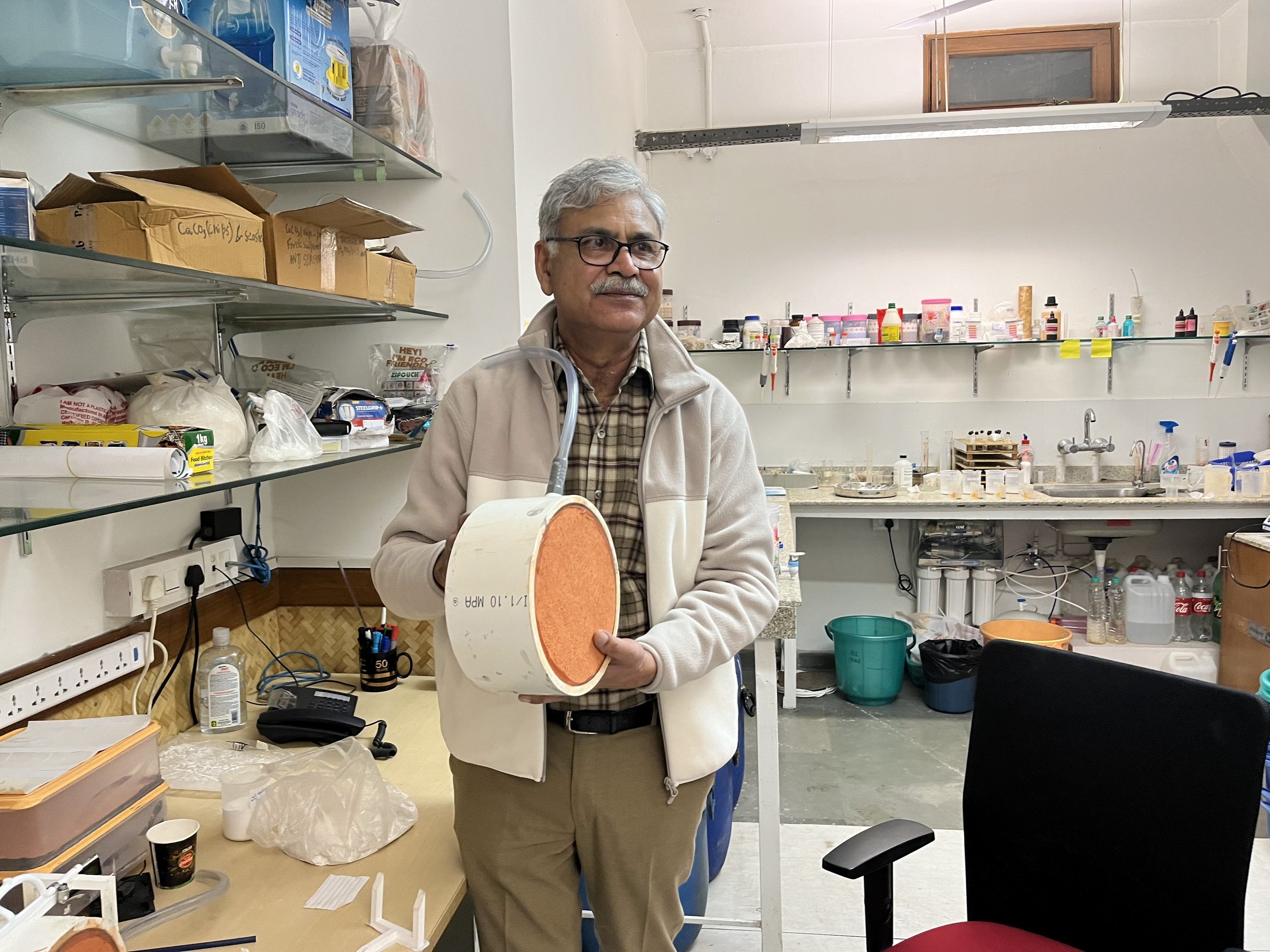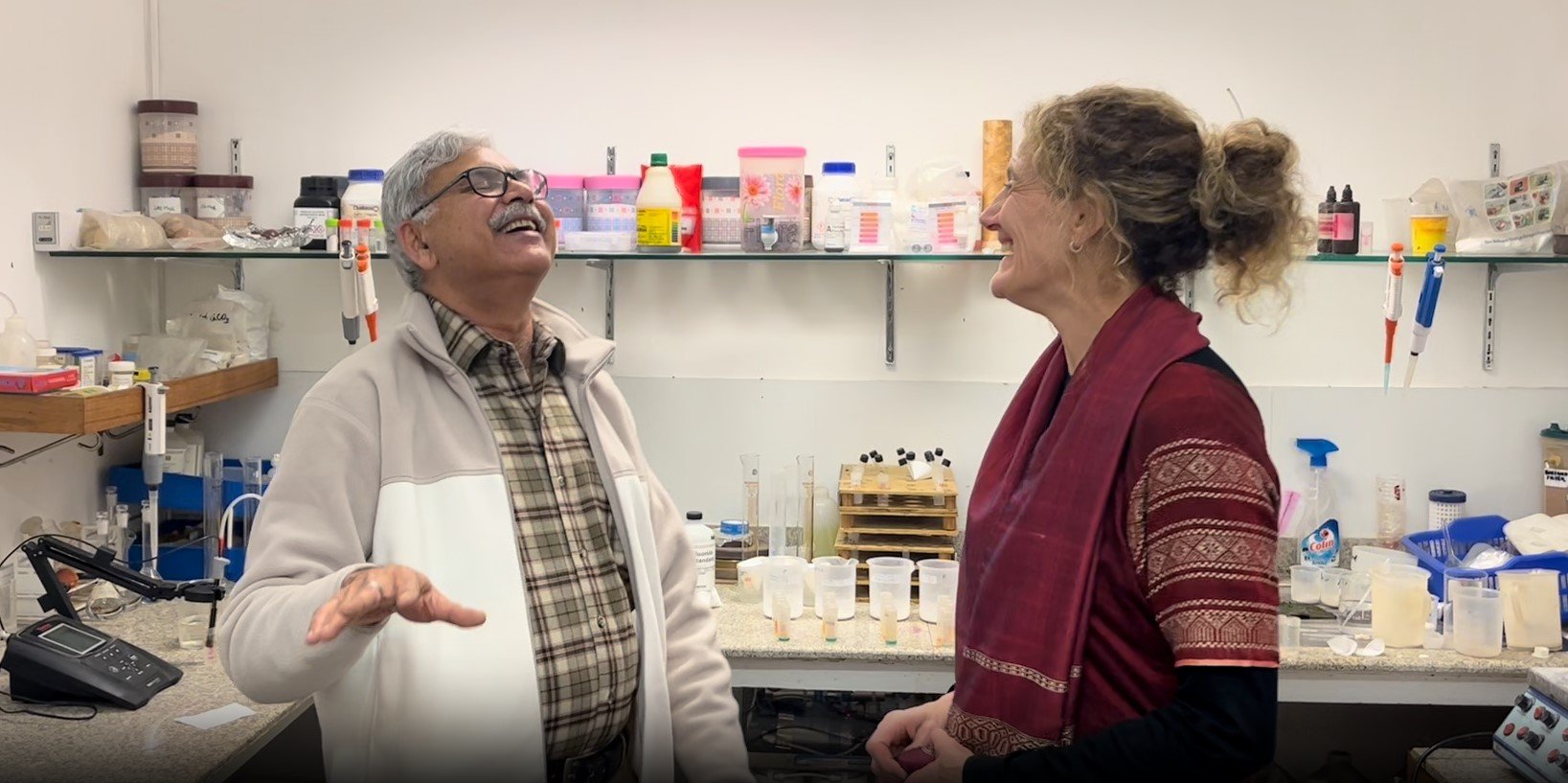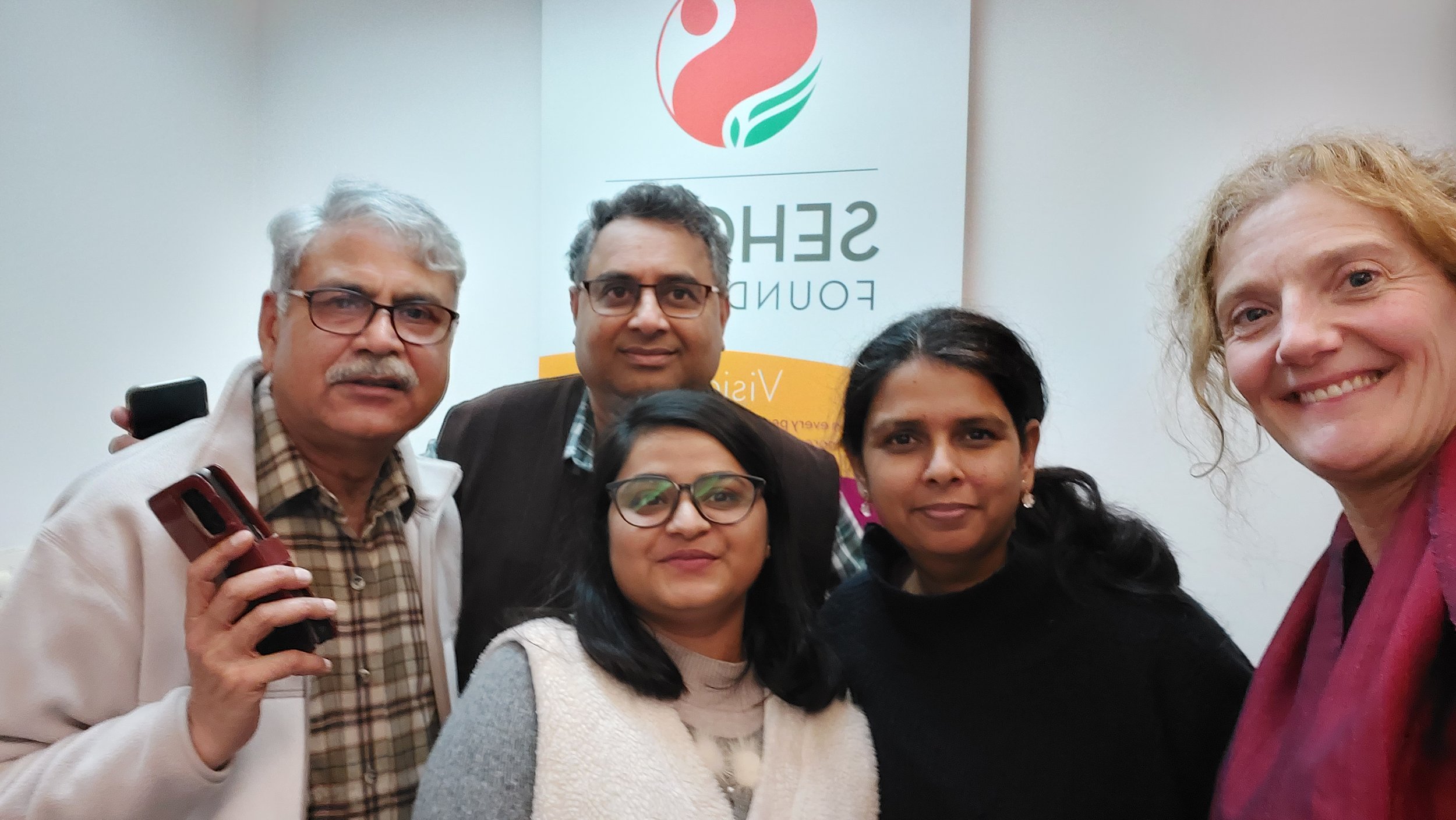Innovative water solutions and community impact – CAWST's journey in Delhi, India
In India, we continue our quest to explore water challenges and solutions across civilizations, from ancient to cutting-edge.
We started in Delhi, with the team at the Sehgal Foundation (one of CAWST’s training partners), catching up on their research on point-of-use treatment solutions, working together on strategies for scale and meeting with their clients and collaborators.
One of our highlights was the opportunity to meet with a few of the organizations they have trained and supported.
We would like to introduce you to one person in particular. Anil Sharma, founder of Sathi, a small local organization working in the Western Himalayas.
Anil travelled 12 hours round trip by train and car from the Himalayas to meet us because he wanted to meet the people behind the biosand filter.
In 2007, Anil's son fell sick from drinking contaminated water in his school and was hospitalized. Anil discovered that the reverse osmosis treatment system at the school was not being maintained properly and went in search of other solutions. He took training on the biosand filter from SAPWI—another organization trained by CAWST—and built a filter for his home and then for others in his community.
Now, 18 years later, Anil and his team at Sathi have built 5,000 filters reaching 30,000 people with safe drinking water. His son is now 24 years old and taking his PhD in atomic physics at Nicolaus Copernicus University in Poland.
Watch Anil’s story in his own words
Chemical contamination, nutrition and climate change
Above: Lalit Sharma, principal scientist, water research & training at Sehgal Foundation
Dan Meeking (former senior director of digital services for CAWST): I had no idea that in places with high levels of naturally occurring fluoride, ongoing exposure to this fluoride goes far beyond tooth decay. Fluorosis (an extremely high cumulative amount of fluoride in the system) harms red blood cells, bones and intestines.
There is a vicious cycle between fluorosis and nutrition: poor nutrition leads to greater susceptibility to fluorosis, and fluorosis leads to reduced nutritional uptake in the digestive system which then amplifies susceptibility to fluorosis.
Sadly, climate change is making this all worse. As water scarcity increases, the concentration of chemical contamination is increasing in the remaining groundwater. In India alone, more than 90 million people have or are at risk of developing fluorosis.
In this short video, Yashi Gautam (program lead, water, research and training, Sehgal Foundation), discusses fluorosis and research.
Active research areas at Sehgal Foundation
Above: Lalit and Shauna share a laugh as they discuss water samples in the lab
Suneel Rajavaram (senior manager, WASH technology for CAWST): Lalit first met Shauna Curry, our President & CEO, in 2005 at an international rainwater harvesting conference in India. He is a civil engineer, who has a long history in design and construction of rainwater harvesting structures and aquifer recharge.
He learned about the biosand filter from Shauna and several years later, in 2016, he wanted to train other organizations and got back in touch with us at CAWST.
I’m continually inspired by Lalit’s knowledge and commitment to advancing research on themes that have yet to be solved, in a very practical and scientific way. He's grounded on reaching people living in extreme poverty. He has also built an India Household Water Treatment Network that now has over 350 members.
Watch this short video to hear what excites Lalit about his work in water, sanitation and hygiene (WASH).
WhatsApp is everywhere!
Dan: In India, WhatsApp dominates the communication landscape. From urban to the most rural centres, WhatsApp is the main channel for communication with friends, family, colleagues and businesses.
For CAWST, WhatsApp groups are commonly set up for a cohort that attended a training: a zero-cost way to encourage dialog and peer-to-peer support after training. We’re curious to hear more about how WhatsApp is used by other organizations and communities that we visit during the rest of our trip.
Above (L-R): The CAWST and Seghal teams—Lalit, Suneel, Yashi, Aparajeeta and Shauna.
Wrapping up on ancient water solutions
Shauna Curry, President & CEO of CAWST: The first step-wells in India date back to 550AD. In the photo below, Lalit is showing the three of us (Suneel, Dan and me) the Agrasen Baoli step-well in Delhi, refurbished at least twice—once in the 14th century and once more recently.
Next, we head south to Hyderabad, Bengaluru, Madurai (all in India) and surrounding communities where we’ll meet R. Seenivan (who brought the biosand filter to India in 2004 and helped define CAWST’s model as it is today).
This blog is a republished version of our Global Notebook e-series. Be the first to get an inside look into our work abroad. Subscribe to Global Notebook to get real-time updates straight to your inbox. Travel with CAWST’s global advisors as they help our partners bring water and sanitation to communities around the world. Subscribe now.




